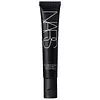What's inside
What's inside
 Key Ingredients
Key Ingredients

 Benefits
Benefits

 Concerns
Concerns

 Ingredients Side-by-side
Ingredients Side-by-side

Aloe Barbadensis Leaf Water
MaskingWater
Skin ConditioningGlycerin
HumectantAlcohol Denat.
AntimicrobialPEG-150 Distearate
EmulsifyingPolyglyceryl-10 Eicosanedioate/Tetradecanedioate
Skin ConditioningDiglycerin
HumectantCannabis Sativa Seed Extract
EmollientOpuntia Ficus-Indica Flower Extract
Skin ConditioningPrunus Avium Flower Extract
Skin ConditioningAgave Tequilana Leaf Extract
AstringentSodium Hyaluronate
HumectantNiacinamide
SmoothingSorbitol
HumectantPullulan
Inositol
HumectantBetaine
HumectantCarbomer
Emulsion StabilisingMaltose
MaskingXylitol
HumectantSodium Hydroxide
BufferingPvp
Emulsion StabilisingPropylene Glycol
HumectantPanthenol
Skin ConditioningVegetable Amino Acids
Skin ConditioningSodium Phytate
Citric Acid
BufferingAlcohol
AntimicrobialBenzoic Acid
MaskingSodium Benzoate
MaskingDehydroacetic Acid
PreservativeBenzyl Alcohol
PerfumingPotassium Sorbate
PreservativePhenoxyethanol
PreservativeAloe Barbadensis Leaf Water, Water, Glycerin, Alcohol Denat., PEG-150 Distearate, Polyglyceryl-10 Eicosanedioate/Tetradecanedioate, Diglycerin, Cannabis Sativa Seed Extract, Opuntia Ficus-Indica Flower Extract, Prunus Avium Flower Extract, Agave Tequilana Leaf Extract, Sodium Hyaluronate, Niacinamide, Sorbitol, Pullulan, Inositol, Betaine, Carbomer, Maltose, Xylitol, Sodium Hydroxide, Pvp, Propylene Glycol, Panthenol, Vegetable Amino Acids, Sodium Phytate, Citric Acid, Alcohol, Benzoic Acid, Sodium Benzoate, Dehydroacetic Acid, Benzyl Alcohol, Potassium Sorbate, Phenoxyethanol
Water
Skin ConditioningDimethicone
EmollientC13-15 Alkane
SolventTalc
AbrasiveDimethicone/Vinyl Dimethicone Crosspolymer
Skin ConditioningCetyl PEG/PPG-10/1 Dimethicone
EmulsifyingPentylene Glycol
Skin ConditioningTrimethylsiloxysilicate
EmollientCaesalpinia Spinosa Fruit Extract
Skin ProtectingOryza Sativa Bran Extract
Skin ConditioningKappaphycus Alvarezii Extract
Skin ConditioningHelianthus Annuus Extract
EmollientRosmarinus Officinalis Leaf Extract
AntimicrobialAlteromonas Ferment Extract
Skin ConditioningTheobroma Cacao Seed Extract
AntioxidantIsododecane
EmollientSodium Chloride
MaskingMagnesium Sulfate
Silica
AbrasiveButylene Glycol
HumectantTriethoxycaprylylsilane
Calcium Aluminum Borosilicate
Disteardimonium Hectorite
StabilisingC24-28 Alkyl Methicone
EmollientPolyquaternium-51
Skin ConditioningPropylene Carbonate
SolventTocopherol
AntioxidantMethicone
EmollientPhenoxyethanol
PreservativeSodium Benzoate
MaskingTitanium Dioxide
Cosmetic ColorantWater, Dimethicone, C13-15 Alkane, Talc, Dimethicone/Vinyl Dimethicone Crosspolymer, Cetyl PEG/PPG-10/1 Dimethicone, Pentylene Glycol, Trimethylsiloxysilicate, Caesalpinia Spinosa Fruit Extract, Oryza Sativa Bran Extract, Kappaphycus Alvarezii Extract, Helianthus Annuus Extract, Rosmarinus Officinalis Leaf Extract, Alteromonas Ferment Extract, Theobroma Cacao Seed Extract, Isododecane, Sodium Chloride, Magnesium Sulfate, Silica, Butylene Glycol, Triethoxycaprylylsilane, Calcium Aluminum Borosilicate, Disteardimonium Hectorite, C24-28 Alkyl Methicone, Polyquaternium-51, Propylene Carbonate, Tocopherol, Methicone, Phenoxyethanol, Sodium Benzoate, Titanium Dioxide
 Reviews
Reviews

Ingredients Explained
These ingredients are found in both products.
Ingredients higher up in an ingredient list are typically present in a larger amount.
Phenoxyethanol is a preservative that has germicide, antimicrobial, and aromatic properties. Studies show that phenoxyethanol can prevent microbial growth. By itself, it has a scent that is similar to that of a rose.
It's often used in formulations along with Caprylyl Glycol to preserve the shelf life of products.
Sodium Benzoate is a preservative. It's used in both cosmetic and food products to inhibit the growth of mold and bacteria. It is typically produced synthetically.
Both the US FDA and EU Health Committee have approved the use of sodium benzoate. In the US, levels of 0.1% (of the total product) are allowed.
Sodium benzoate works as a preservative by inhibiting the growth of bacteria inside of cells. It prevents the cell from fermenting a type of sugar using an enzyme called phosphofructokinase.
It is the salt of benzoic acid. Foods containing sodium benzoate include soda, salad dressings, condiments, fruit juices, wines, and snack foods.
Studies for using ascorbic acid and sodium benzoate in cosmetics are lacking, especially in skincare routines with multiple steps.
We always recommend speaking with a professional, such as a dermatologist, if you have any concerns.
Learn more about Sodium BenzoateWater. It's the most common cosmetic ingredient of all. You'll usually see it at the top of ingredient lists, meaning that it makes up the largest part of the product.
So why is it so popular? Water most often acts as a solvent - this means that it helps dissolve other ingredients into the formulation.
You'll also recognize water as that liquid we all need to stay alive. If you see this, drink a glass of water. Stay hydrated!
Learn more about Water